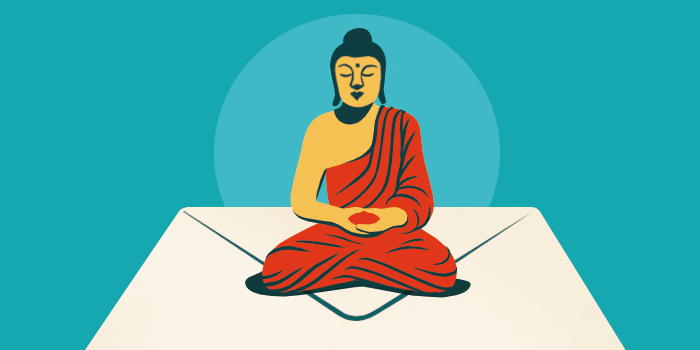Who was the Buddha’s family?

The Buddha’s son Rahula, who became a monk, is pictured here as an enlightened arhat. | Arhat Rahula. China; Qing dynasty. Photograph courtesy Rubin Museum of Art
When he was 29 the Buddha left his family to seek enlightenment, but that is not where the story ends. Later he returned home and shared his teachings with his family, many of whom became members of his sangha.
Parents
The historical Buddha, Siddhartha Gautama, was the son of Suddhodana and Maya, the king and queen (or chief and chieftainess) of the Shakya clan. That is why he is often called Shakyamuni, or Sage of the Shakyas.
Suddhodana was warned by a wise man that his son would either renounce the world or become a powerful ruler, so he tried to keep him enclosed in a world of pleasure. Nonetheless, Siddhartha learned about suffering and became a renunciant. After the Buddha attained enlightenment, Suddhodana sent messengers to ask his son to come home, but the messengers all joined the sangha as Buddhist converts. Eventually, the Buddha returned and taught his father, who became an arhat shortly before his death.
Little is known about Maya. Before her son’s birth she was visited by dreams predicting an unusual child. She died seven days after giving birth to Siddhartha in a garden at Lumbini, where she had stopped on the way to her parents’ home.
Aunt and foster mother
Maya’s sister Prajapati, who was also married to Suddhodana, raised the infant Siddhartha alongside her children. When Suddhodana died, Prajapati played a pivotal role in convincing the Buddha to ordain women and became the first Buddhist nun. She is a revered figure in Buddhist history, called Mahaprajapati Gautami.
Wife and son
Before Siddhartha set out on his spiritual journey, he married a young woman named Yasodhara. Little is known about her, but she is said to have had golden skin and been born on the same day as the Buddha-to-be. They were married at 16, and at 29 Yasodhara gave birth to their son, Rahula, whose name is often said to mean “fetter.” Shortly thereafter, Siddhartha left his family and princely life to become a wandering ascetic. Later, when the Buddha returned home, Rahula, was urged by his mother to ask his father for his inheritance. The Buddha told his son he had something far more valuable than riches to give him—the dharma. As a monk Rahula was called “lucky Rahula,” known for his eagerness for training, his patience, and his dedication to the monastic code. Rahula’s ordination pained Suddhodana and led him to rebuke the Buddha for hurting his family twice. However, many of the Buddha’s relatives eventually joined him in the sangha, including Yasodhara, who became an arhat.
Cousins
Two of the Buddha’s cousins were particularly prominent monks: the brothers Ananda and Devadatta. Ananda became the Buddha’s attendant and was renowned for his keen memory. He is credited with preserving many Buddhist discourses. Devadatta, on the other hand, caused much trouble. He tried to usurp the Buddha’s position as the head of the sangha, proposed reforms that the Buddha rejected, and even tried to kill the Buddha by various means. Devadatta eventually repented and has since served as an example of how anyone can be redeemed, regardless of past behavior.
Other Relatives
There were many other relatives who played a role in the early sangha. The most prominent were Sundari, the Buddha’s half-sister, said to be the foremost meditator among the early nuns; Nanda, the Buddha’s half-brother, famous for his beauty and love of beautiful women; Aniruddha, the Buddha’s cousin, who was criticized for sleeping too much, causing him to give up sleep for 25 years; and Mahanaman, Aniruddha’s brother, one of the earliest monks, said to be present at the Buddha’s first sermon.

Tricycle is more than a magazine
Gain access to the best in sprititual film, our growing collection of e-books, and monthly talks, plus our 25-year archive
Subscribe now